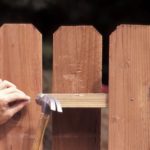
Fencing is at the crux of American home ownership. The vast majority of homes, young and old, rural and urban, utilize some type of fencing on the property. Fences serve a variety of purposes, from privacy to security to landscape appeal. And just as uses for fencing vary, so do the materials available for fence building. Wood, vinyl, aluminum, and iron fencing are all popular fencing materials. Each material has its own range of styles and grades.
St. Louis Fence Companies
- Affordable Fencing of St. Louis 314-422-6964
- Alpha Fence & Deck Systems 314-892-2500
- Chesterfield Fence & Deck 636-489-2474
- Easter Fence 314-892-8500
- Empire Fence 314-638-7600
- Fence & Deck Depot 636-385-5858
- Fence Formations 636-728-0500
- First Choice Fence Co. 314-337-5551
- Houlihan Fence 636-532-3466
- Imperial Fence 314-571-5908
- JB Fence & Fabrication 636-349-2288
- Kennedy Fence 314-521-0936
- Kirkwood Fence 314-966-3333
- Midwest Fence 636-399-2946
- Soulard Garage & Fence 314-281-6989
- St. Louis Fence Co. 314-200-0529
Vinyl Fencing: Vinyl fencing is made from polyvinyl chloride (PVC) and has several benefits over other fencing materials. Vinyl is more expensive but has incredible longevity and is maintenance-free. It is only limited by a small range of available colors. Most vinyl fences are designed in the picket style but are also available in privacy, ranch, and pool fence style.
Wood Fencing: There are three main types of wood fencing: privacy, picket, and rail fences. Conventional types of wood used include cedar, pine, redwood, cypress, and more. The availability of each will depend on the region. Privacy fences serve to provide the homeowner with seclusion and an intimate setting. Usually six to eight feel tall, privacy fences are common in both urban and suburban environments.
Fences St. Louis
Picket fences, led by the white picket fence, are a truly American tradition. They are shorter than a privacy fence (3-4 feet tall) and are not intended to allow privacy so much as an enclosed yard and a colonial style. Styles of picket fencing include arched, scalloped, gothic, French gothic, dog-eared, and standard flat-top.
Rail fences are prevalent in rural areas such as farms and ranches, where animal containment is necessary. Rail fences consist of round, square, board, or split rails attached to posts. They allow an uninterrupted view of the landscape. Often, a mesh wire is combined with rail fence framing to keep smaller animals in or out.
Chain Link Fencing: Chain link fences are classic in both residential and commercial settings. They provide many years of security and privacy. Most chain link fences will have that standard, “silver” look to them, but they come in a surprisingly wide range of colors, qualities, sizes, and types. Chain link fences are usually coated with galvanized zinc, giving them that silver color, which protects them from rusting. They also come in a variety of gauges and post sizes. The rule of thumb here is the smaller the gauge number, the tougher the fence. Conversely, the wider the post, the stronger it will be. Wide posts are typically used at corners with smaller posts along the runs.
St. Louis Fence Company
Iron Fencing: Iron fencing has long combined both beauty and function in residential, commercial, and industrial situations. Also known as ornamental fencing, it was originally made from wrought iron. Steel or aluminum are now incorporated into production. Most commercial and industrial fences are made using welded or assembled steel. Aluminum is more common in the residential arena. Iron fences can be designed with pickets above or below the fence’s top rail. Also, aside from its customized, ornamental appeal, iron fencing provides security by keeping unwanted prowlers out and pets and children in the yard.
Aluminum Fencing: Aluminum fencing is similar to iron fencing but offers heightened durability and little or no maintenance. Modern ornamental fences are either hybrids, utilizing both steel and aluminum, or solely aluminum.
ALSO CHECK: Fire – Water Restoration